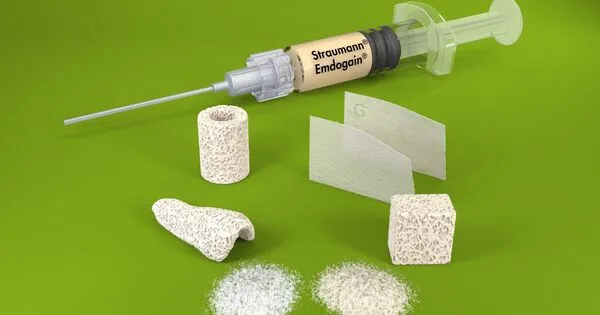A biomaterial is a substance that has been created to interact with biological systems for either therapeutic (treating, augmenting, repairing, or replacing a tissue function of the body) or diagnostic purposes. Biomaterials are a type of substance that interacts with biological systems in order to replace or augment native tissues or organs, diagnose disorders, or give therapeutic interventions.
The comparable branch of research, known as biomaterials science or biomaterials engineering, has been around for over fifty years. It has grown steadily and rapidly throughout its history, with numerous corporations investing enormous sums of money in the creation of new goods. Medicine, biology, chemistry, tissue engineering, and materials science are all incorporated under biomaterials science.
These materials are intended to be biocompatible with the human body and can be used for a variety of medical and therapeutic applications. These are essential in a variety of professions, including medicine, dentistry, and tissue engineering. It is important to note that a biomaterial is distinct from a biological material, such as bone, which is created by a biological system. Furthermore, because biomaterials are application-specific, it is important to take caution when categorizing them as biocompatible. A biomaterial that is biocompatible or appropriate for one application may not be in another.
Key characteristics:
- Biocompatibility: Biomaterials should not elicit harmful immune responses or toxic reactions when they come into contact with living tissues. They must be well-tolerated by the body.
- Mechanical Properties: Depending on their intended use, biomaterials may need to possess specific mechanical properties, such as strength, flexibility, or elasticity, to mimic natural tissues.
- Bioactivity: Some biomaterials can promote specific biological responses, such as cell adhesion and tissue regeneration. This is especially important in tissue engineering and regenerative medicine.
- Degradability: Biomaterials can be designed to degrade over time, allowing them to be absorbed or metabolized by the body as natural tissue regeneration occurs.
- Sterility: Biomaterials used in medical procedures or implantation must be sterile to prevent infections or complications.
Types of biomaterials include:
- Metals: Metals like titanium, stainless steel, and cobalt-chromium alloys are commonly used in orthopedic implants and dental prostheses due to their strength and durability.
- Polymers: Synthetic polymers, such as polyethylene, polypropylene, and polyurethane, are used in a wide range of medical devices, including artificial heart valves, catheters, and sutures.
- Ceramics: Bioceramics like hydroxyapatite and alumina are used in dental and orthopedic applications due to their biocompatibility and similarity to natural bone.
- Biodegradable Polymers: These materials break down over time and can be used in applications like drug delivery systems and absorbable sutures.
- Natural Biomaterials: Substances derived from living organisms, such as collagen, chitosan, and silk, can be used in tissue engineering and wound healing.
Biomaterials research is progressing, resulting in the discovery of novel materials and uses in medicine and healthcare. These materials help to improve the quality of life for many people by enabling the development of safer and more effective medical devices and therapies.
















